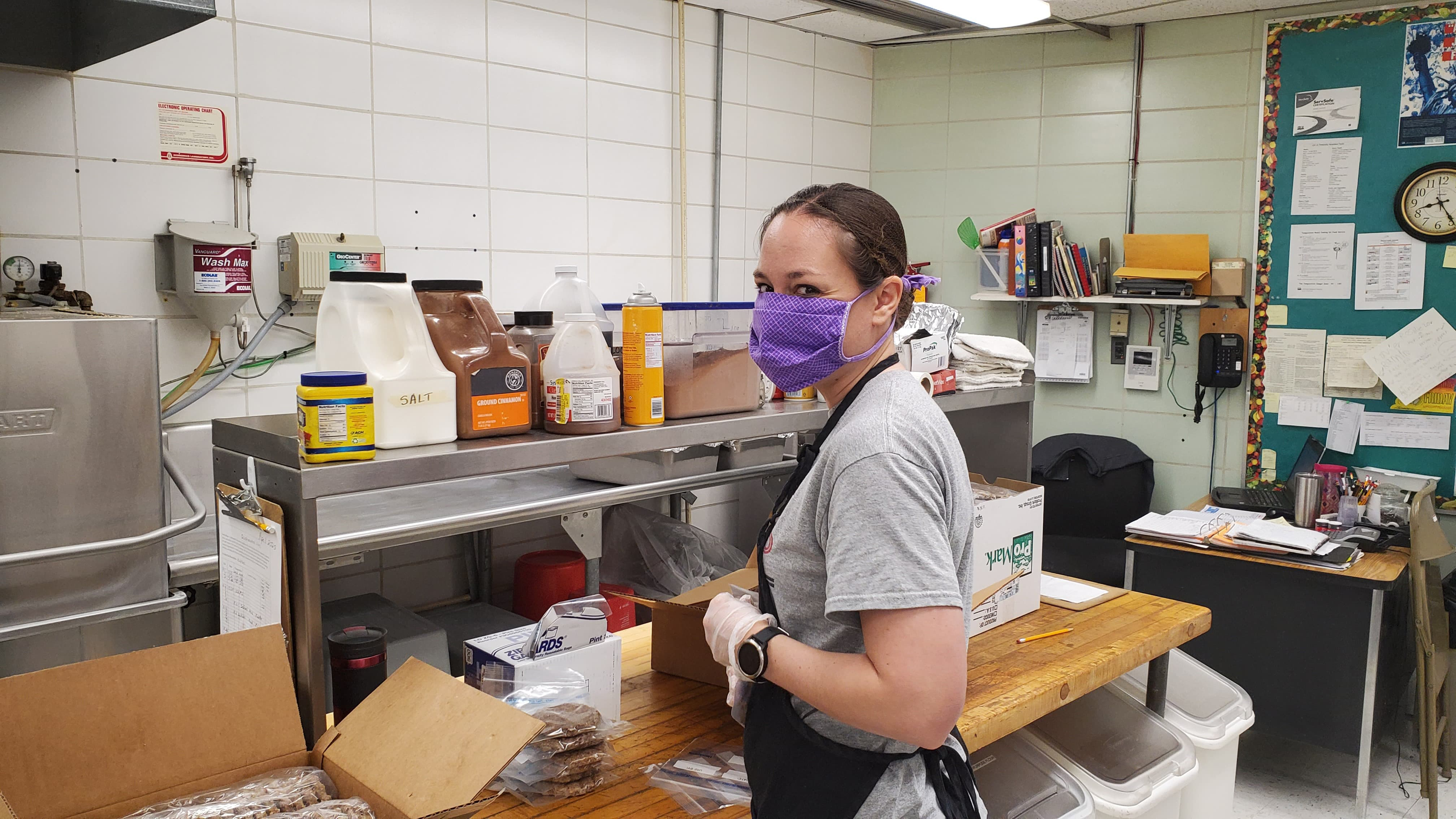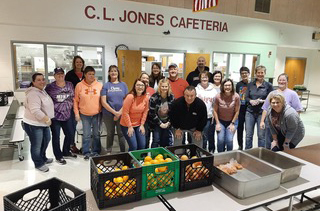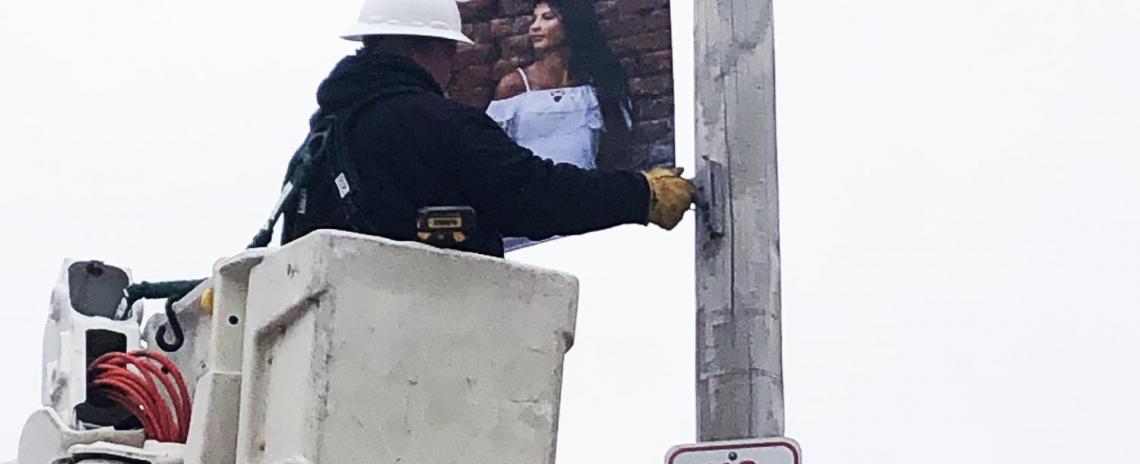How three school districts navigated the early stages of the pandemic to meet needs of communities, families and students
How three school districts navigated the early stages of the pandemic to meet needs of communities, families and students
By Tyler Dahlgren
*This five-part article was originally published in the summer edition of the NCSA Today magazine.
Part One: Initial Response
“Talk about a whirlwind.”
Superintendent Dr. Travis Miller and the administrative team at Bayard Public Schools had been keeping an eye on international news, and first dove into the Centers for Disease Control and Prevention’s flu pandemic guidelines in late February.
February, when groups of people still gathered in public and classrooms buzzed with students eyeing the school year’s final stretch. February, before the world was tipped upside down.
With a sense that COVID-19 could alter the course of school’s final two months, Dr. Miller and his team studied resources like the CDC and the Readiness and Emergency Management for Schools (REMS) Technical Assistance (TA). The district heeded the guidance of the Panhandle Public Health District, who was growing worried about the outbreaks in Colorado and the return of Pandhandle residents from popular mountain ski resorts.
“We had reviewed all of those guidelines and incorporated what we’d gathered into a district response plan that our Board of Education approved at a meeting in early March,” said Miller. “Little did we know, a week later we would be closing our doors for the rest of the year.”
Little more than 20 miles to the west, Scottsbluff Public Schools was in the process of adding an “Infectious Disease” component to its All-Hazards Emergency Response Manual, an installment that began in late February.
“Suddenly, it felt urgent,” said SPS superintendent Rick Myles. “Even, then, I didn’t at all expect, as we were putting the finishing touches on the plan, that our area schools would be advised by the PPHD to announce a move to a remote learning environment just two weeks later.”
That was March 15th, a Sunday night, and in the central part of the state, Minden Public Schools superintendent Jim Widdifield was four days into preparing his district as best he could for the impending uncertainty and joined a webinar where Commissioner of Education Dr. Matt Blomstedt addressed administrators from across the state.
Minden was coming off Spring Break, a four-day weekend, and held classes on Monday the 16th for the final time.
“Talk about a whirlwind,” said Widdifield, who called an emergency staff meeting that Monday night.
On Tuesday morning, schools across the state, and the nation, were vacant.
That’s when the work really began.
Part Two: Communication Efforts
“Everybody knew this wasn’t a one-person job. We all had the carpet ripped right out from underneath us. We were going to be in it together.”
The following four days are still an astounding blur for Widdifield, who watched his staff come together to launch a lunch program, delve out devices and resolve internet-access issues in a well-orchestrated flash.
“We refused to let 840 kids walk out of our doors in the middle of March without direction,” Widdifield said. “We were going to put something together and we were going to make it look the best we could with what we had. It was a great effort by our staff and our administrators.”
In Bayard, Dr. Miller didn’t wait to send out the district’s COVID-19 response plan to staff, who received the document on the same night that it had been approved by the board. The district called on ESU 13, who came out to train BPS staff in Zoom and provide a helping hand in the shift to remote learning.
“The team at ESU 13 has been leading in distance learning for 20 years now, with the Western Nebraska Distance Learning Consortium, and our schools and our students are no strangers to it,” said Miller. “Their leadership and the systems that they have established to support learning in a rural and remote environment were incredibly beneficial when we had to change to a COVID-19 response mode of operating our schools without students in the buildings.”
Scottsbluff held a district-wide Zoom meeting two days after it was announced that the 2019-20 school year would be completed in a remote form. Nearly 500 employees were logged in as the administrative team discussed the future.
“Our staff needed a little time to get their own lives in order and we asked that they take the next week to reorient themselves to teaching from home and to increase their skill with the technology we had available to us,” said Myles. “Allowing them this time to purposefully begin to emotionally adjust and intellectually prepare for what was coming was, perhaps, the most important decision we made.”
Staff response in Bayard, Minden and Scottsbluff was much the same. Valiant, with an undeterred devotion to student well-being and progression, both in curriculum and in day-to-day life.
“Our staff members never wavered from our mission, which is ‘Every Child, Every Day,’” said Myles. “It was as if everyone knew they had a job to do, and quickly went about the business of getting it done.”
SPS contacted Allo Communications and other area providers and developed a list of families without internet access, checking those families off the list one-by-one over the next two weeks until each student was connected with the necessary equipment and access. Allo even provided 60 days of service to families at no cost.
In Minden, there were no ifs, ands or buts about it. For their students, the school was going to make it work. Widdifield put out surveys to garner an idea as to what internet access and technology was available to students at home. USA Communications, Charter Spectrum, and other internet providers stepped up in bringing Wi-Fi access to students without prior connection.
“We put hotspots in Heartwell and Upland, two really small communities whose kids come to Minden, so that they had a place to access the internet with their school devices,” Widdifield said. “It was a community effort and just a positive thing to see.”
The shift to remote learning was one that had to be done remarkably fast. To make it happen, Widdifield explained, everybody had to step up. The story of how it was accomplished couldn’t be told without the families of the students stuck at home.
“Our parents have been incredibly supportive,” said Miller. “We’ve asked them to take on roles they’ve never had to, and they’ve stepped up to the challenge. Whether it be providing a great place in their homes for students to access instruction through the internet, or increased supervision roles, time and time again our parents have supported the educational endeavors of the school.”
Part Three: Food/Nutrition Distribution
“We’ll go broke before we let kids go hungry.”
The pandemic’s ripples reached beyond the locked doors of school buildings. Far beyond technology integration and an honorable attempt at keeping curriculum on course.
Staying home sounds simple enough, but for some, that’s where the pandemic’s punch lands the hardest. For school districts, it’s in those places that the most important work is being done.
“The thing I’m most proud of is the way our team has really worked to make sure we have a good continuity of nutrition plan for students,” said Miller, whose staff is delivering about 600 meals to students each day. “Our staff did a terrific job of putting together a school nutrition plan that involved utilization of our bus drivers and our fleet of transportation vehicles, along with some para-educators and administrators, who are delivering the food daily.”
In April, Minden Public Schools provided more than 9,000 total meals. A group of community businesses started to help with meal services as folks in the area began losing jobs or seeing a deduction in hours.
“That’s a big thing about this community,” Widdifield said. “When things are not going well, or if someone needs help, there’s twenty-five people who’ll step up and take on whatever it is that they’re struggling with. Everyone was on the same page, and the administration and board was adamant that we’ll go broke before we’ll let kids go hungry.”
In Scottsbluff, two of every three students qualify for free or reduced lunch. For the most unfortunate, not eating at school could mean not eating at all. Each week, the district distributes more than 5,000 meals to its families.
“Additionally, with a primary focus on the mental health and emotional safety of our children, our counselors and LMHP’s, and our two alternative school programs, have connected families with resources that are intended to replicate the safety net that exists during more conventional times,” said Myles.

(Above: Bayard Schools’ Laura McLaughlin assembles meals for students during the pandemic closure. The district utilized a fleet of transportation vehicles and a staff-wide approach to deliver 600 meals to students each day.)
Part Four: The Class of 2020
“What this class has endured, we hope this will lead to a sense of closure for these kids and, hopefully, will make our alumni stronger in the future.”
One of Bayard’s seniors said something in early April that really stuck with the school’s superintendent.
“I may have had my last day of school, and I didn’t even know it,” said the student. “I didn’t get a chance to say goodbye to anybody.”
Students across Nebraska are surely feeling the same way, the weight of a void left by a lack of closure, but school districts are rallying in inspiring ways to provide the Class of 2020 with the special send-off they so much deserve.
In Bayard, for example, a professional videographer was hired to work with staff to prepare a virtual graduation video that was streamed through the district’s Striv account and then shown at the Midwest Theater’s “Pop-Up Drive-Up” theater at the Legacy of the Plains on the Monday after a planned virtual ceremony.
City streets were lined with banners recognizing each graduated senior and, in May, the senior cruise tradition was carried on. The district also provided each graduate with a set of alumni recognition pins, a new tradition that Miller hopes will continue on for many years to come.
“What this class has endured, we hope this will lead to a sense of closure for these kids and, hopefully, will make our alumni stronger in the future,” said Miller, who still hopes to honor graduates in a physical ceremony down the road.
For two months, Widdifield has seen staff members across the board step up to keep district operations moving in the right direction, and that was no different when it came to graduation.
“It was our goal to recreate our graduation program the best that we could in a virtual sense,” the second-year superintendent said. “The only thing we couldn’t recreate very well was the choir and the 1200 people who would be sitting in the gym for the ceremony, but I think everything else we were able to do a really good job with.”
Part Five: Keep on Keeping On
“We’re going to give it our best to provide our kids with the best possible education and experiences in whatever format we’re allowed to have in the future.”
Teachers, Widdifield feels, are inherently creative people, problem-solvers and innovators in a time where everybody in education is being asked to, well, solve problems and innovate.
“For us, I think we did get it right,” he said. “Our teachers have a knack for coming up with some amazing ideas that have kept the kids engaged in learning and moving forward.”
The new norm, though it changes by the day, is one of isolation, where most connections are made digitally. For school districts, it’s been worlds away from ideal, though there have been moments that are nothing short of remarkable. Triumphs and achievements, worthy of celebrations, and the ordinary musings of confinement, worthy of a laugh.
“When it’s time for PE, my elementary students (at home), make a lot of noise in the living room with their karate moves and running-in-place and sit-ups and calisthenics,” said Dr. Miller, the father. “I’ve heard my kids playing their trombones or singing from their bedrooms while they’re doing their music classes. We’re trying to continue to provide opportunities academically and in the exploratory classes as well.”
Bayard students put their skills on display during a virtual talent show and the district continued with its yearly tradition of holding a community clean-up day. What school is going to look like in the fall is still a relative mystery, but that doesn’t mean districts are allowing themselves to be stuck in neutral.
School doors are closed, for now, but schools themselves were never closed.
“While we don’t know what school will look like in the fall, I have full faith and confidence in the students, in our community and in our teachers that we’re going to give it our best to provide our kids with the best possible education and experiences in whatever format we’re allowed to provide,” said Miller.
Widdifield is planning on welcoming students back to Minden Public Schools on August 13 until he is told otherwise. And even then, the district has contingencies in place to keep on keeping on.
“We have to keep moving,” he said. “I’m not waiting for this thing to decide what it’s going to do, because as soon as you do that you’re already behind. We’re not waiting.”
The pandemic has brought with it many challenges, said Myles, the most prominent being a sudden reliance on remote learning. He feels his staff was successful in implementing an effective model with very little time to prepare. Still, there’s no substitute for the real thing, and school districts eagerly await the return of their students.
“No matter what we do and how creative our instructors are, there is no confusion on anyone’s part that this modality is as good as face-to-face learning,” Myles said. “We have schools for a reason.”

(Above: Staff at Minden Public Schools provided more than 9,000 total meals for students through the month of April despite the school doors being closed due to the pandemic.)


